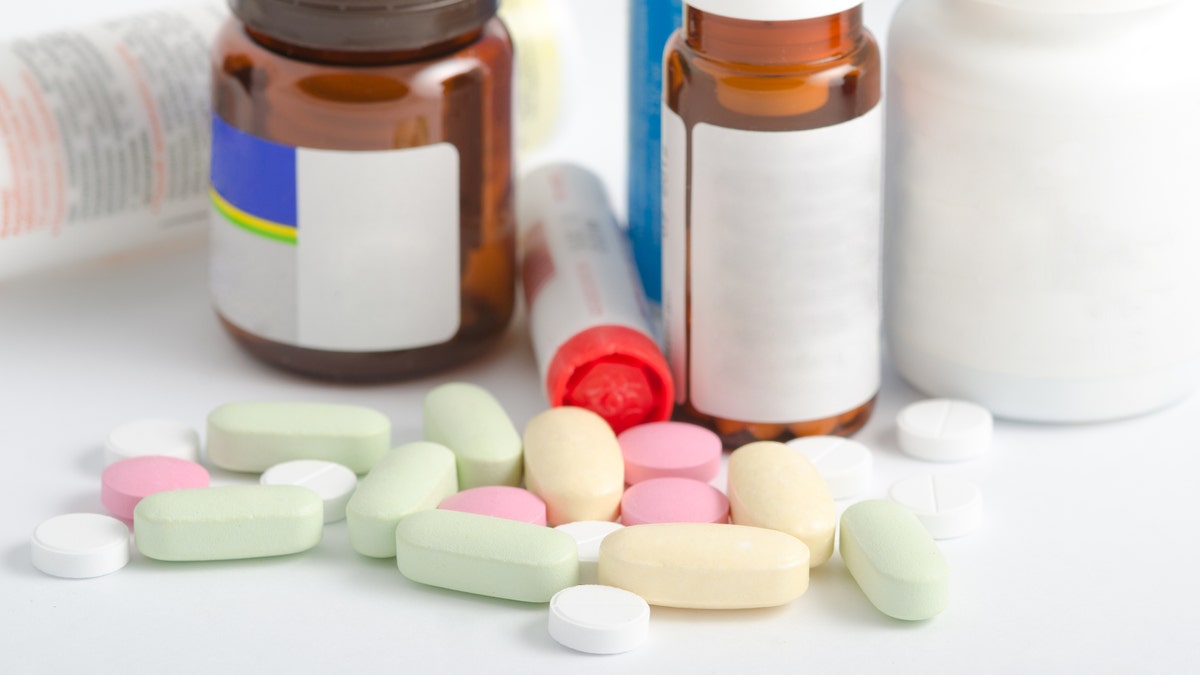
Pills and bottles (VladimirSorokin)
Before Donald Trump became president-elect of the United States, I declared my support for his proposed efforts to help curb the tragic opioid abuse epidemic our nation is facing today. This week, the Centers for Disease Control and Prevention (CDC) released new data that suggests this issue is becoming increasingly pressing.
More Americans died of drug overdose in 2015 than ever before, the CDC announced Thursday. In a single year, 50,000 Americans lost their lives due to the epidemic, which has largely been fueled by doctors overprescribing painkillers and patients’ skyrocketing abuse of heroin— an illicit drug that is largely making its way across the United States border and into Americans’ hands.
The CDC found that heroin fatalities soared by 23 percent from 2014-2015, reaching nearly 13,000 deaths— only slightly higher than the number of gun homicides. Illicit fentanyl, the drug blamed in the late pop icon Prince’s death, saw the biggest gain in abuse rates: Its use rose by 73 percent in the one-year period, claiming 9,580 lives. Meanwhile, use of opioids saw the biggest increase, but led to the most deaths in 2015, as drugs such as Oxycontin and Vicodin killed 17,536 Americans last year— a 4 percent increase from 2014.
As I said back in May, I think President-elect Trump will be the best leader to help address this epidemic, but it will take the cooperation of physicians, pharmaceutical companies, health care workers, church leaders and patients themselves to help save innocent lives. However, I believe there are certain steps the Trump administration should— and feasibly can— take to get a handle on the issue. The recently passed bipartisan 21st Century Cures Act, which allocates $1 billion toward addressing opioid epidemic, can help make these things possible.
1.) Prioritize a new model for health care providers to assess pain
In the 1990s, the Centers for Medicare and Medicaid Services began using a regulatory mandate in the form of what’s called a pain intensity scale, which required doctors ask their patients to rate their pain on a scale of 1 to 10. A rating of “0” indicated no pain, “4” indicated the pain was distressing and “10” indicated the worst pain. Although this concrete scale had good intentions because it sought to address what regulators then saw as under-treatment of pain, many experts now agree the scale has led to far too many patients being addicted to painkillers rather than healed from the injuries that caused the pain in the first place. After all, allowing patients to self-report pain when taking highly addictive drugs can be dangerous. Moving forward, it will be very important that whoever is heading this effort in the White House does away with this regulatory scale and create a new model for assessing pain. In the end, doctors need better tools to effectively and safely determine who needs prescription painkillers and who can do without them.
2.) Implement electronic monitoring for prescription drug points of purchase
If a doctor gives her patient a prescription for Vicodin after he hurts his back, and that person goes to pharmacy A to fill it, but then goes across town to another doctor who calls for a prescription at pharmacy B, he should not be allowed to fill that second prescription before his doctor clears it and he has completed the first recommended dose. Ultimately, we need a central database that monitors narcotics to curb prescription shopping and inadvertent dispensing among chains that do not talk to each other.
3.) Entice the pharmaceutical industry to look for alternatives for pain management
Contrary to what many doctors have been trained to believe, narcotics are not the only avenue for addressing pain. New, promising drugs are emerging in this field that offer similar benefits without the risk of addiction. The CDC has issued advice on this matter, pointing out alternatives for common ailments like lower back pain, osteoarthritis and fibromyalgia. Alternatives to NSAIDs such as intravenous acetaminophen also may offer promise for a non-addictive way to address pain.
4.) Focus on patient treatment, as well as prevention and education
The CDC has recognized that overprescribing has fueled the current epidemic, but we are dealing with an enormous mental health crisis in this country as well. As patients become addicted to their prescription opioids, but are then cut off from their doctors, many turn to the streets for cheaper, more accessible illicit drugs like heroin and fentanyl. For many patients, the euphoric effects of fentanyl are too extreme to resist. According to the CDC, the synthetic drug is 50 to 100 times more potent than morphine. Sometimes, people mix the drug with heroin to increase its intensity, and each time they take the drug they need more to get the same level of high they did before. It’s time health officials made these risks clearer and for communities to put a greater emphasis on treatment, prevention and education so more lives can be saved. Some community initiatives, like those in Maryland, have increased access to naloxone, the anti-overdose drug that experts say can increase survival rates.
5.) Work with drug enforcement agencies and border control to halt the import of illicit drugs
According to the Drug Enforcement Administration (DEA), heroin is processed from morphine and drawn from poppy plants grown in Southeast and Southwest Asia, Mexico and Colombia. Meanwhile, the DEA has spoken out about halting the import of fentanyl to the U.S. Quick to produce and profitable, fentanyl may enter the U.S. through Mexican cartels who buy large quantities of the drug from China. While hospitals and physicians should make changes in their practice to curb overprescribing painkillers, the government needs to protect our border and prevent these illicit drugs from continuing to claim the lives of mothers, fathers, children, neighbors and teachers at these alarming rates.
The Associated Press contributed to this report.
